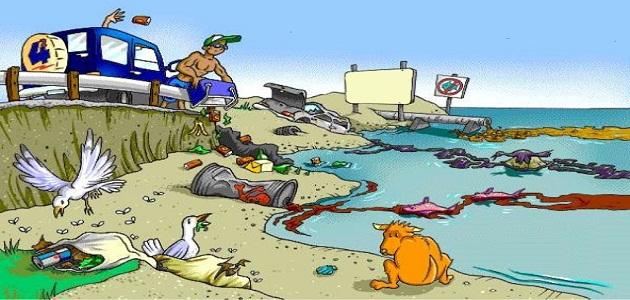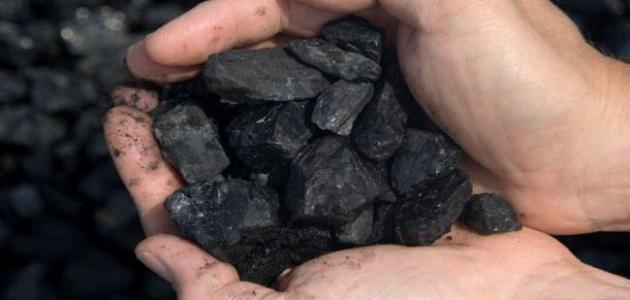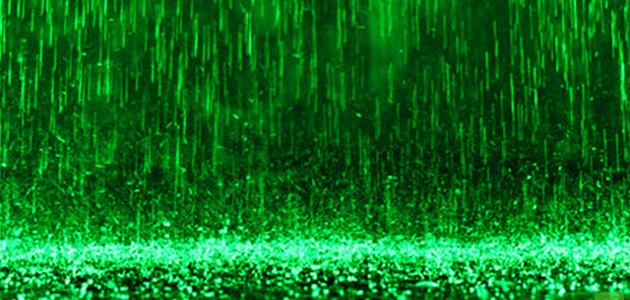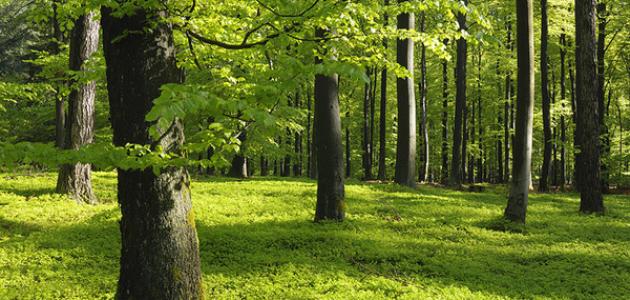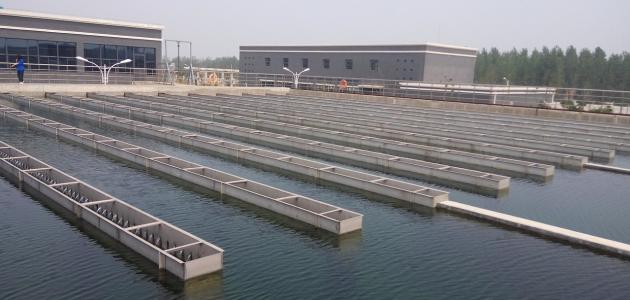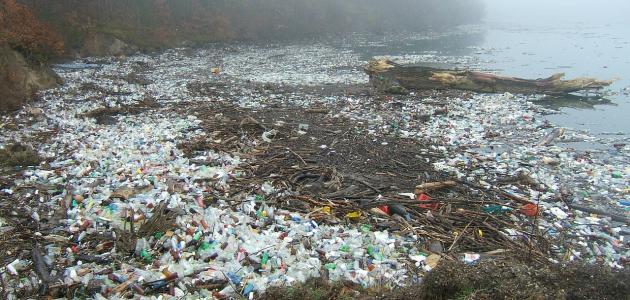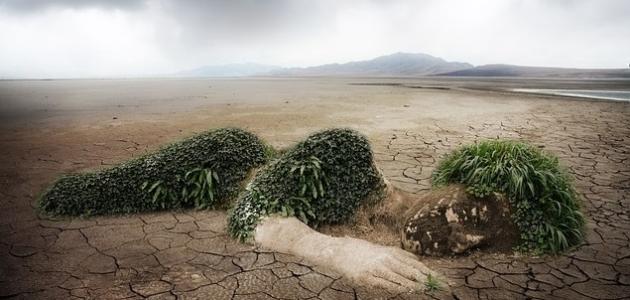An overview of the environment and the ecosystem
The environment can be defined as the conditions surrounding living organisms, where living organisms are linked to their surrounding environment for their growth, development, access to food, and habitat. So that the environment is considered a basic life-supporting system that is linked to all vital systems in the world, while the term “ecosystem” according to ecology refers to the entire geographical area, including the living organisms that live in it and the surroundings that interact with it, to include each of the living parts; such as humans, plants, and non-living parts; such as the weather and the terrain around it; That is, the ecosystem expresses the community in which living and non-living organisms interact with each other, and also includes the relationships between them, and the ecosystem may be natural or artificial, terrestrial or marine, and examples of artificial ecosystems: agricultural lands, gardens, parks, and ponds hydro.
Ecosystems differ from each other in terms of their size, as well as their biotic and abiotic features. some of them are represented by the waters of the oceans and salty seas, and the other is with fresh water, in addition to the ecosystems on land, and the oceanic ecosystems are the most widespread on the planet; Because it covers about three-quarters of its surface, and the fresh ecosystems do not exceed 1.8% of it, while the natural systems on land constitute the remainder of the ecosystems on the surface of the earth.
Read also:How is water treated?components of the ecosystem
The environment or ecosystem consists of biotic and abiotic components that are important in any ecosystem. Examples of living and non-living components include:
- Biotic Components include:
- primary products.
- Herbivores.
- Carnivores.
- Carnivores and plants.
- Sweeper objects.
- Abiotic components include:
- Sun light.
- the heat.
- precipitation.
- water or moisture.
- the soil.
Biological communities often include what are called functional groups, which are vital categories that each category includes living organisms that all perform the same function in the ecosystem without regard to their types. For example, all plants that perform photosynthesis or primary producers form one functional group together, regardless of their different types.
types of ecosystems
There are three types of ecosystems or biomes, which are as follows:
- Aquatic Biomes: It is represented by the ecosystems of water bodies; Such as: oceans, seas, rivers, lakes, springs, etc., and can be divided into smaller vital systems as follows:
- Ecosystems in ponds: Their area is relatively small, and they contain many types of amphibians and insects. They can also include fish, but they will not be able to move easily in them like amphibians.
- River ecosystems: fish, amphibians, insects, and plants live in it, and some birds can be found in it, which get their food by catching small fish from the river.
- Shallow water ecosystems: Some species of small fish and corals can live in them.
- Deepwater Ecosystems: The huge marine creatures that live in the deep sea.
- Terrestrial Biomes: They are the ecosystems that exist on land, and they include: forests, deserts, grasslands, tundra, and coastal areas, and are divided into the following:
- Rainforests: Many organisms live in this ecosystem in a small geographical area. Therefore, it is considered one of the most dense ecosystems.
- Tundra: It is considered a simple ecosystem, as there are very few forms of life in it; Due to the harsh conditions and very cold temperatures there.
- Deserts: They form very hot ecosystems, unlike the tundra, and animals prefer to live in them rather than live in extremely cold conditions such as the tundra.
- Forests: They are considered complex ecosystems, and they can support many forms of life, and they are considered the most existing among other terrestrial systems, and examples of them: tropical forests and coniferous forests.
- Lentic Biomes: An example is a swamp, which is home to both aquatic and terrestrial organisms, and exposure to sunlight is required to ensure that photosynthesis is necessary to provide the organisms that live there with the carbohydrates necessary for survival.
Types of interactions in ecosystems
The interactions that occur between living organisms in ecosystems are divided into two main groups, as follows:
Read also:How does the ecosystem changepositive interactions
Positive interactions are the assistance of organisms to each other within the ecosystem, and this assistance may be unilateral or reciprocal, and includes the following:
- Coexistence (in English: Commensalism): It is a relationship between two organisms so that one benefits from the other, while the other is not affected. For example: some cellulosic fungi produce a number of organic acids from cellulose, so bacteria and fungi that are unable to decompose cellulose benefit from the resulting carbon.
- Non-Obligatory Mutualism: It is a relationship between two living organisms from which both parties benefit, but this relationship is not considered necessary and essential for the survival of either of them, for example: when the nitrous bacteria (in English: Azotobacter) fix nitrogen using cellulose as an energy source, provided that there are cellulose decomposers to convert it into simple sugars, and organic acids.
- Mutualism: It is the most common relationship between organisms, as both species benefit from it, and this interaction is characterized as a permanent and relatively obligatory contact due to the necessity for the survival of the two parties; For example: some beings get; such as bees, butterflies, moths, and others on their food from plants, and pollinate them at the same time so that the plants benefit from this, and the symbiotic nitrogen fixation between legumes and rhizobium is another example of trade-off.
negative interactions
Negative interactions include relationships that may result in harm to either party; Such as: competition for food, or when some types of organisms eat other types of organisms, and the following points represent the most important of these interactions:
Read also:Waste pollution of the environment- Competition: It is a situation in which two types of living organisms compete to obtain nutrients, a specific area, or any other need when there are specific quantities of them, so that one ends up overpowering the other. Such as the relationship between the fungus Fusarium oxysporum or Fusarium oxysporum and a type of Agrobacterium Radiobacter.
- Predation: It is the relationship that describes the situation in which a predator - an organism that feeds on other species - kills another organism to eat it. Most predators are animals, but there are some plants that are considered carnivores as well. Some plants, such as Drosera, feed on insects and small animals, and there are also some protozoa that feed on bacteria.
- Parasitism: A parasitic organism is one that lives on or inside the bodies of other organisms (host organisms), and obtains its food from their tissues, and differs from a predatory organism in that it does not kill its host, but rather benefits from it. Like Cuscuta plants, they grow on other plants and depend on them for their food.
- Antibiosis: It is the phenomenon in which an organism produces a substance called an antibiotic at a low concentration that prevents the growth of another organism. Such as: penicillin, streptomycin, and Trichodrama harzianum, which inhibit the growth of Rhizoctonia fungus.
environment functions
The ecosystem has many functions, the most important of which are:
- Organizing basic environmental processes and supporting life systems, in addition to its important role in their stability.
- Nutrient cycling between biotic and abiotic components.
- Maintaining a balance between the different trophic levels in the ecosystem.
- Circulating minerals through the biosphere.
- Abiotic components contribute to the synthesis of organic components, which in turn are associated with energy exchange processes.

